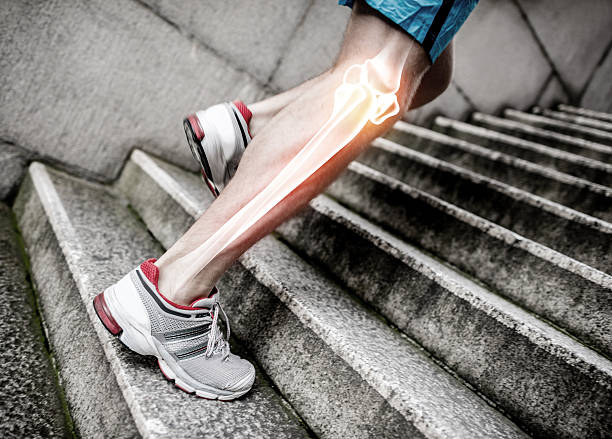Joint Health
Unlock The Power of Natural Healing for Bone and Joint Pain
Are you tired of taking pain relievers to alleviate your bone and joint discomfort? If so, you are not alone. Many people are looking for natural ways to relieve their discomfort without the side effects of medicines. In this post, we’ll look at several natural ways to reduce bone and joint pain, hoping to help you get the relief you’re looking for.
Common Causes of Bone and Joint Pain
Before we get into natural therapies, it’s important to understand the most prevalent causes of bone and joint pain. Whether you’re in pain due to arthritis, osteoporosis, or regular wear and tear, determining the underlying cause will help you select the most effective natural treatments.
Inflammation, injury, overuse, and underlying illnesses such as rheumatoid arthritis or gout can all contribute to bone and joint discomfort. Recognizing the particular source of your pain allows you to personalize your natural treatment plan to address the underlying issue and encourage healing.
The Importance of Natural Remedies for Pain Relief
When it comes to treating bone and joint pain, natural therapies provide a comprehensive strategy that addresses the underlying source of the discomfort rather than simply concealing the symptoms. Unlike medications, which may provide brief relief but have possible negative effects, natural therapies seek to alleviate pain while also boosting general well-being.
Natural cures frequently involve lifestyle modifications such as introducing certain foods into your diet, modest exercise, herbal remedies, and alternative therapies. By accepting these natural options, you can lessen your need on opioids and achieve long-term relief without any negative side effects.

Diet and Nutrition for Bone and Joint Health
Proper diet is essential for keeping strong bones and joints. Certain foods provide nutrients that improve bone density, reduce inflammation, and promote joint health. By including these items into your diet, you may provide your body the building blocks it requires to heal and strengthen its bones and joints.
Calcium is a vital mineral for bone health. Foods high in calcium include dairy products, leafy greens, and fortified cereals. Vitamin D is also important since it aids the body’s calcium absorption. Vitamin D can be found in fatty fish, eggs, and from sunlight exposure.
In addition to calcium and vitamin D, omega-3 fatty acids found in fatty fish, flaxseeds, and chia seeds have anti-inflammatory qualities that can aid with joint pain. Turmeric, a spice popular in Indian cuisine, includes curcumin, a substance recognized for its anti-inflammatory properties.
Exercise and Physical Therapy for Pain Management
While it may appear contradictory to exercise while in pain, regular physical activity can help relieve bone and joint discomfort. Low-impact workouts such as walking, swimming, and cycling can help to increase joint flexibility, strengthen surrounding muscles, and reduce stiffness.
Physical therapy is another excellent way to treat bone and joint pain. A professional physical therapist may design a personalized exercise program that addresses your unique needs, thereby improving mobility, reducing pain, and preventing additional damage.

Herbal Remedies and Supplements for Pain Relief
Herbal medicines and supplements have long been used to treat a variety of conditions, including bone and joint pain. These natural remedies can help to reduce inflammation, alleviate pain, and enhance overall joint health.
Devil’s claw is a common herbal medicine. This plant has chemicals that are anti-inflammatory and can help reduce arthritic discomfort. Ginger is another beneficial herb for reducing inflammation and relieving joint pain.
Supplements such as glucosamine and chondroitin sulfate are commonly used for joint health. These substances occur naturally in cartilage and can aid in the regeneration of injured joints while also reducing pain. However, before starting any supplements, you should contact with a healthcare practitioner to confirm they are appropriate for your individual condition.
Alternative Therapies for Bone and Joint Pain
In addition to diet, exercise, and herbal medicines, alternative therapies can help with bone and joint pain. These therapies promote holistic healing and can supplement established treatments.
Acupuncture is an alternative therapy that includes inserting tiny needles into particular spots on the body. This practice is thought to increase the body’s natural painkillers and improve recovery. Massage therapy can also help to relieve muscle stress, increase circulation, and alleviate joint pain.

Lifestyle Changes to Alleviate Bone and Joint Pain
Making some lifestyle modifications can have a big impact on your bone and joint health. Simple changes to your daily routine can help relieve discomfort and avoid future injury.
Maintaining a healthy weight is critical, as excess weight puts additional strain on your bones and joints. Losing weight can help ease pressure and pain. Quitting smoking is another important lifestyle adjustment because smoking weakens bones and slows the healing process.
Tips for Preventing Future Bone and Joint Pain
In terms of bone and joint health, prevention is always preferable to treatment. By following a few basic guidelines, you can lower your chances of having future bone and joint discomfort.
Regular exercise is critical for preserving healthy bones and joints. To keep your bones and joints strong and flexible, try a combination of cardiovascular, strength training, and stretching exercises.
Protecting your joints during physical activity is also critical. To minimize overexertion and injuries, use the correct equipment, warm up before exercising, and pay attention to your body’s signals.
Conclusion
Say goodbye to my dependency on painkillers and embrace the power of natural solutions. By incorporating specific foods into my diet, practicing regular exercise, exploring herbal remedies and alternative therapies, and making lifestyle changes, I’ve found effective ways to relieve bone and joint pain naturally.
I understand that everyone’s body is unique, and what works for one person may not work for me. That’s why it’s essential to consult with a healthcare professional before making any significant changes to my treatment plan. With a proactive approach to my bone and joint health, I’ve been able to reduce pain, improve mobility, and enhance my overall quality of life. I encourage others to start their journey to natural pain relief today!
Trusted Health, Wellness, and Medical advice for your well-being


